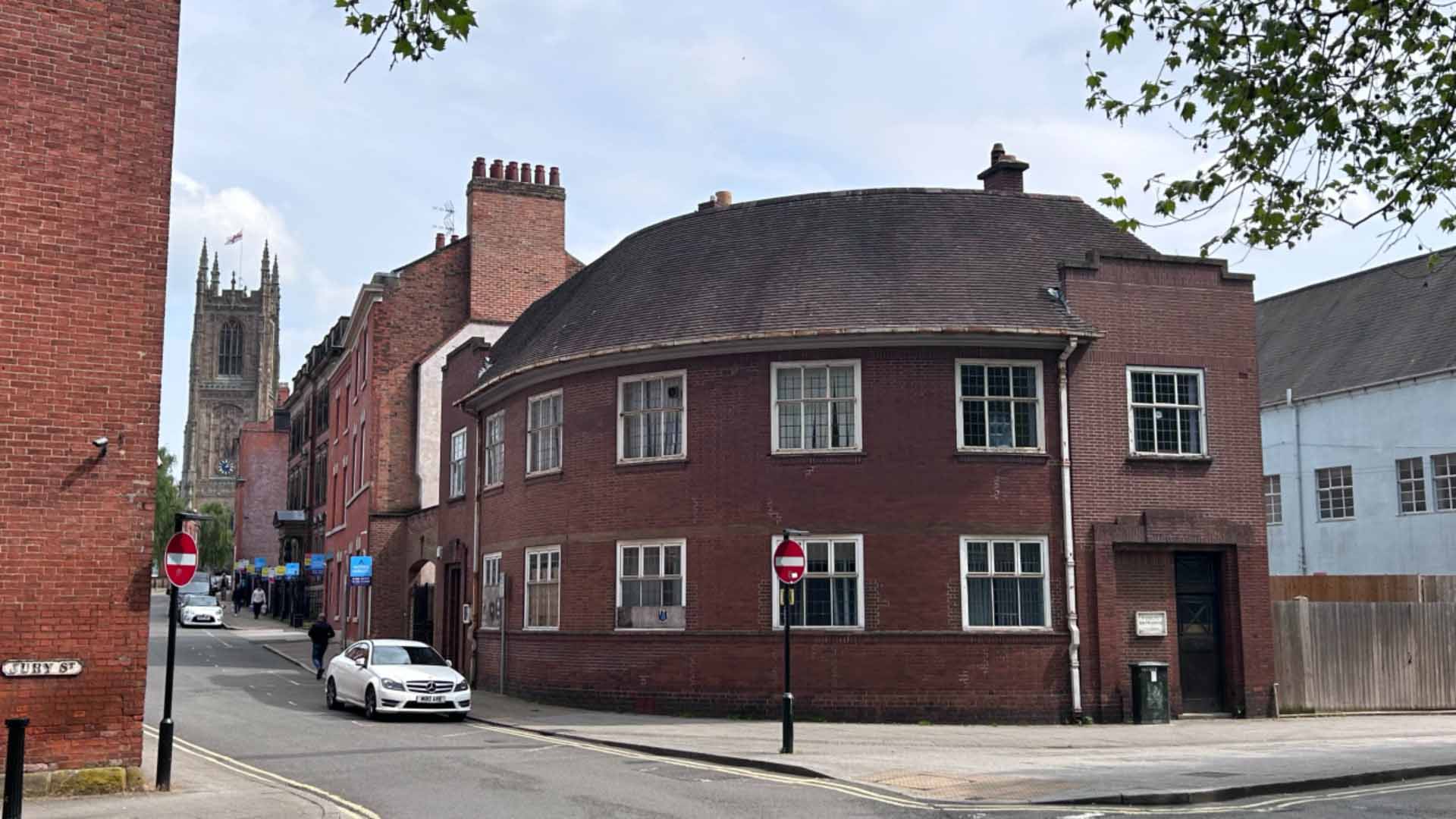Case Study: Stubbin Wood School
In June 2025, planning permission was granted for a new Special Educational Needs (SEN) school build at Stubbin Wood

Case Study: Stubbin Wood School – SEN New Build, Langwith Junction
Project Overview
In June 2025, planning permission was granted for a new Special Educational Needs (SEN) school build at Stubbin Wood in Langwith Junction. The scheme has been developed with a clear vision: to create a purpose-built environment that supports a diverse range of disabilities and educational needs while navigating strict budget constraints and an accelerated construction programme. The design and construction strategy was carefully tailored to reflect the unique requirements of the pupils and staff, ensuring inclusivity, safety, and long-term sustainability.
________________________________________
Client: TEAM Education Trust
Architect: INCO Architecture & Project Management
Contractor: TBC
Location: Langwith Junction, Derbyshire
Planning Approval: June 2025
Completion Target: TBC
Construction Method: Timber Frame
________________________________________
Design Driven by SEN Needs
Stubbin Wood School provides for children and young people with a broad spectrum of special educational needs and disabilities, including autism, physical impairments, and profound and multiple learning difficulties (PMLD). The design brief demanded more than compliance with accessibility legislation – it required an environment that promotes calm, engagement, and security for some of the most vulnerable learners.
Key SEN-led Design Features:
• Zoning and Circulation: Clear and predictable spatial organisation helps reduce anxiety and confusion. Quiet zones, sensory break-out spaces, and therapy rooms are distributed evenly throughout the building to reduce movement stress.
• Acoustic Treatment: Enhanced soundproofing and acoustic ceilings in classrooms and corridors support students with sensory processing difficulties.
• Natural Light and Colour: Classrooms maximise controlled natural light with anti-glare finishes and neutral, low-arousal colour schemes. External shading helps manage solar gain while reducing visual overstimulation.
• Accessibility: Level thresholds, generous corridor widths, ceiling track hoists, and fully accessible hygiene suites are standard throughout the build. All areas are wheelchair accessible, including outdoor play and sensory gardens.
• Safety: Strategic use of soft landscaping, safe outdoor spaces, and secure boundary treatments foster freedom and exploration within a protected environment.
________________________________________
Balancing Budget and Vision
Delivering a high-specification SEN school within a fixed public-sector budget presented a complex challenge. The project team worked collaboratively to ensure value for money without compromising on the educational or sensory needs of the pupils.
Cost-Efficiency Strategies:
• Timber Frame Construction: A prefabricated timber frame was chosen for its speed of erection, cost-effectiveness, and environmental performance. It also allowed early enclosure of the building, which reduced delays from weather and enabled internal works to progress rapidly.
• Modular Offsite Elements: Specialist rooms, including hygiene suites and sensory spaces, were designed for modular manufacture and rapid on-site installation, helping reduce waste and minimise programme risk.
• Long-Life Components: Durable, low-maintenance materials such as robust wall linings, high-spec floor finishes, and vandal-resistant fittings were selected to reduce long-term running costs.
________________________________________
Delivering to a Tight Programme
Meeting the programme deadlines was essential to accommodate increasing pupil demand and avoid disruption to existing school operations. With planning approval secured in June 2025, the project has entered the construction phase with a firm commitment to completion before the 2026–27 academic year.
Programme Management Highlights:
• Early contractor engagement and Design & Build procurement allowed construction planning to run in parallel with the final design stages.
• Timber frame panels were manufactured offsite while groundworks commenced, compressing the critical path timeline.
• Digital project management tools were utilised to coordinate sub-contractors and ensure just-in-time delivery of materials.
________________________________________
Community and Legacy
The new Stubbin Wood School build is more than a facility – it is a vital investment in the future of inclusive education in Derbyshire. By placing the unique needs of SEN and disabled children at the heart of the design, the project sets a benchmark for future education schemes. Despite financial and programme challenges, the scheme exemplifies how intelligent design, collaborative working, and modern construction methods can deliver truly transformative spaces.
How INCO Delivered Success Against the Odds
In the world of construction, success often depends on innovative design and the ability to navigate complex regulatory challenges with expertise and determination. A seemingly straightforward site such as this can still throw up challenges despite the best preparation beforehand. At INCO, we demonstrated why we were chosen by the client - by securing planning permission despite facing multiple significant hurdles that could have derailed less experienced teams.
This achievement for TEAM Education Trust showcased our core strength: transforming planning obstacles into manageable challenges through strategic thinking, collaborative expertise, and sometimes just sheer will!
Below are some of the challenges we met along the way:
Biodiversity Net Gain Requirements
Introducing Biodiversity Net Gain (BNG) legislation has fundamentally changed the planning landscape, requiring developments to demonstrate measurable improvements to local biodiversity. For our school project, this meant proving that the development would deliver at least 10% biodiversity net gain compared to the site's pre-development baseline. The challenge here was to do this on site without incurring ‘off-site’ costs, which would have cost the client thousands of pounds.
How INCO Overcame It: We engaged ecological specialists early in the design process, conducting comprehensive habitat surveys to establish accurate baseline measurements. Our team worked closely with Brindle & Green Environmental Consultants to develop an integrated landscape strategy incorporating native species planting and wildlife corridors, as well as sustainable drainage systems. Rather than treating BNG as a compliance box-ticking exercise, we embedded biodiversity enhancement into the architectural vision, creating outdoor learning spaces for educational and ecological purposes.
Protected Species and Rare Flora
The discovery of bats and rare orchids on site presented further challenges which you cannot predict until the necessary site survey are undertaken. Protected species legislation means that any development affecting habitats requires detailed mitigation strategies and often seasonal restrictions on construction activities.
How INCO Overcame It: Working with our ecological consultants, we developed a phased approach that respected natural breeding and flowering cycles. For the bats found near the site, low-level lighting was specified to mitigate any light pollution in their foraging/flight corridors. The rare orchids required careful translocation strategies, with specialist horticultural input to ensure long-term survival. Our project management expertise proved crucial here, as we proactively designed the construction set-up of the site to ensure existing and future flora and fauna species were protected.
Tree Preservation and Arboricultural Constraints
Mature trees on and adjacent to the site required careful consideration.. The challenge was designing a building that maximised educational space while respecting existing tree root protection areas and canopy coverage.
How INCO Overcame It: Our years of construction knowledge helped design car parking and paths outside of critical tree root areas, avoid canopies overhead, and position the building to complement existing tree lines. The result was a design that enhanced the natural setting while meeting all spatial requirements for the educational facility.
Adjacent Sports Field Designation
The proximity to a designated sports field added another layer of complexity, with concerns about potential impacts on recreational facilities and the need to demonstrate that the development wouldn't compromise existing community amenities.
How INCO Overcame It: We conducted detailed impact assessments and consulted Sports England. Our design incorporated buffer zones and landscaping that enhanced the school's and sports facilities' interface. We transformed a potential conflict into a community asset by demonstrating how the two uses could complement each other – with potential for shared educational and recreational opportunities.
Contaminated Land Remediation
Perhaps the most technically complex challenge was addressing contaminated land issues that required comprehensive remediation before any development could proceed. Contamination affects construction methods and has significant implications for long-term building performance and user safety.
How INCO Overcame It: Our multidisciplinary approach proved essential here. Working with Ivy House Environmental, we developed a remediation strategy that was fully integrated with our architectural and engineering designs. Rather than treating contamination as a separate issue to be resolved before design work could begin, we developed solutions that addressed both challenges simultaneously. This included specialised foundation systems, enhanced ventilation strategies, and careful material selection to ensure long-term building performance.
The INCO Difference: Strategic Collaboration
What distinguished our approach was the seamless integration of all these solutions into a cohesive project strategy. Our experience in estates management and compliance meant we could anticipate how different challenges would interact, developing solutions that addressed multiple issues simultaneously rather than in isolation.
Our strong relationships with Bolsover District Council proved invaluable. They enabled early dialogue about concerns and collaborative problem-solving rather than adversarial negotiations. This relationship-based approach and our technical expertise created the foundation for success.
Turning Obstacles into Opportunities
Each hurdle we overcame ultimately strengthened the final design. The BNG requirements led to richer outdoor learning environments. Protected species considerations created unique educational opportunities. Tree preservation enhanced the building's natural setting. The sports field proximity fostered community connections. Even contamination remediation contributed to building performance innovation.
The Result
The process ultimately led to a result whereby planning approval was secured for a much-needed building to address a shortfall in educational facilities for children with specialist educational needs. The building is expected to start later in the year, and we can't wait to see the next stages of this scheme unfold!




